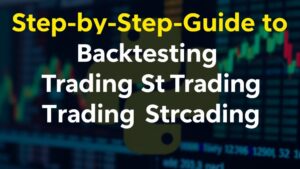Spotlighting the Power of Data
Data-driven insights are transforming the way we approach investing. Here’s how algorithms are reshaping the rules.
Algorithmic Trading with Artificial Neural Networks
Algorithmic trading has revolutionized the way financial markets operate, enabling traders to execute orders at lightning speed based on complex algorithms. Among the various techniques used in algorithmic trading, Artificial Neural Networks (ANNs) have gained significant traction due to their ability to learn from data and adapt over time. This article will explore the intersection of algorithmic trading and ANNs, discussing their architecture, advantages, challenges, and real-world applications.
Artificial Neural Networks are computational models inspired by the human brain’s architecture. They consist of interconnected nodes (neurons) that process data in layers. The primary goal of ANNs is to recognize patterns and make predictions based on input data.
Key Components of ANNs
- **Neurons**: The basic unit of an ANN, performing simple computations.
- **Layers**: ANNs are structured in layers:
- Input Layer**: Receives the data.
- Hidden Layer(s)**: Processes the data with weighted connections.
- Output Layer**: Produces the final output.
- **Weights and Biases**: Parameters that are adjusted during training to minimize prediction error.
- **Activation Functions**: Determine the output of each neuron and introduce non-linearity into the model.
Types of ANNs
- Feedforward Neural Networks**: The simplest type where information moves in one direction—from input to output.
- Convolutional Neural Networks (CNNs)**: Primarily used for image data but can be adapted for time series analysis in trading.
- Recurrent Neural Networks (RNNs)**: Suitable for sequential data, making them ideal for predicting stock prices based on historical trends.
The Role of ANNs in Algorithmic Trading
Algorithmic trading involves executing buy and sell orders based on pre-defined criteria, often leveraging vast amounts of market data. ANNs can enhance this process in several ways:
Predictive Modeling
- Price Forecasting**: ANNs can analyze historical price data and identify patterns, enabling traders to predict future price movements.
- Volatility Estimation**: They can assess market volatility, providing insights into potential risk and reward scenarios.
Signal Generation
- Buy/Sell Signals**: By learning from historical trading data, ANNs can generate actionable signals, guiding traders on when to enter or exit positions.
- Arbitrage Opportunities**: ANNs can identify price discrepancies across different markets, allowing traders to capitalize on arbitrage opportunities.
Risk Management
- Portfolio Optimization**: ANNs can assist in optimizing asset allocation based on historical performance and market conditions.
- Drawdown Prediction**: By analyzing past performance, ANNs can forecast potential drawdowns, helping traders mitigate risk.
Implementing ANNs in Algorithmic Trading
Step-by-Step Process
- **Data Collection**: Gather historical data including price, volume, and other relevant indicators.
- **Data Preprocessing**: Clean the data by handling missing values and normalizing it for better performance.
- **Feature Selection**: Identify important features that influence trading decisions, such as:
- Moving averages
- Relative strength index (RSI)
- MACD (Moving Average Convergence Divergence)
- **Model Selection**: Choose the appropriate ANN architecture based on the nature of the data and the trading strategy.
- **Training the Model**: Use historical data to train the ANN, adjusting weights through backpropagation.
- **Backtesting**: Test the model on unseen historical data to evaluate its performance before deploying it in live trading.
- **Deployment**: Once validated, implement the model in a real trading environment with live data.
Example of an ANN in Trading
Consider a simple feedforward ANN designed to predict stock prices:
- Input Layer**: Takes in features like historical prices, volume, and technical indicators.
- Hidden Layers**: Perform multiple computations to uncover complex patterns.
- Output Layer**: Predicts the future price movement (up, down, or hold).
By training this ANN using historical data, traders can gain insights into potential future price movements, enhancing their trading strategies.
Advantages of Using ANNs in Trading
- Adaptability**: ANNs can learn from new data, adjusting predictions as market conditions change.
- High Dimensionality**: They can handle complex, high-dimensional datasets that traditional models may struggle with.
- Non-linearity**: ANNs can capture non-linear relationships between variables, providing deeper insights into market dynamics.
Challenges and Limitations
While ANNs offer significant advantages, they also come with challenges:
- **Overfitting**: ANNs can become too tailored to the training data, leading to poor performance on unseen data.
- **Data Quality**: The accuracy of predictions heavily relies on the quality of input data; noisy or incomplete data can skew results.
- **Computational Resources**: Training complex ANNs requires substantial computational power, which may not be feasible for all traders.
- **Market Changes**: Financial markets are influenced by numerous external factors; ANNs may struggle to adapt to sudden shifts in market behavior.
Real-World Applications of ANNs in Algorithmic Trading
Case Study: Hedge Funds and Proprietary Trading Firms
Many hedge funds and proprietary trading firms have integrated ANNs into their trading strategies. These firms leverage vast amounts of financial data, employing ANNs to identify trends and develop sophisticated trading algorithms.
- Example**: A hedge fund might use an ANN to analyze historical stock price movements alongside economic indicators, generating buy/sell signals that are executed automatically.
Retail Traders
With advancements in technology, retail traders are also beginning to utilize ANNs for trading:
- Platforms**: Various trading platforms now offer tools that incorporate ANNs, enabling traders to build and deploy their own models.
- Education**: Online courses and resources are available to help traders understand how to implement ANNs in their trading strategies.
Conclusion
Algorithmic trading powered by Artificial Neural Networks presents an innovative approach to navigating the complexities of financial markets. By leveraging the predictive capabilities of ANNs, traders can enhance their decision-making process, optimize their portfolios, and better manage risk. However, the challenges associated with data quality, overfitting, and market dynamics must be carefully considered.
As technology continues to evolve, the integration of ANNs in algorithmic trading is likely to expand, offering new opportunities for both institutional and retail traders. Embracing these advancements will be crucial for traders looking to stay competitive in an increasingly data-driven financial landscape.



